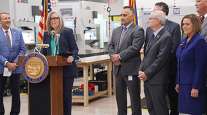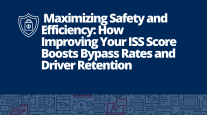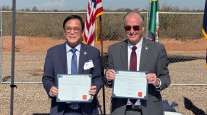Staff Reporter
Arizona Installs Drivewyze System to Eliminate Weigh Station Waste

The Arizona Department of Transportation installed automatic verification systems to save time and costs for the more than 9 million trucks that pass through its weigh stations each year.
To curb wait-time expenses, the state recently started using the Drivewyze PreClear bypass service to expedite check-in procedures at inspection sites.
ADOT estimated that 9,054,559 trucks enter the state each year.
Trucks queueing at weigh stations cost companies time and fuel. Drivewyze estimated that the average pull-in to a weigh station lasts 3 minutes, 40 seconds and costs about $9.30 in fuel, maintenance and operational costs.
“One of our goals is to reduce friction interstate drivers face as they move from state to state,” ADOT spokesman Herrmann said. “Preclearance programs allow us to reduce the time that drivers are off the road for an inspection without sacrificing safety on Arizona roads.”
Drivewyze does not require trucking companies to furnish their vehicles with additional equipment, such as a transponder. When a trucking company subscribes to Drivewyze, the technology company collects the license plate information and registration numbers for every vehicle in the fleet. Drivewyze maps inspection sites through “geofencing,” allowing the company to track trucks registered for the service. As a truck nears a weigh station, the geofence signals that the truck is approaching.
Two miles from a station Drivewyze sensors, which are embedded in the ground, weigh oncoming trucks and register their identification numbers. The geofence system matches the registered truck with its weight as it crosses the scale. One mile later, the system sends a notification to drivers via electronic logging devices or mobile phones informing them if they passed inspection or need to pull in to the weigh station, according to Drivewyze.
Herrmann said he anticipates 5% of trucks will be pulled over for inspection.
Trucking companies must have their fleets registered with PreClear in order for them to be recorded by the sensors.
Herrmann said he hopes to get more vehicles registered over time.
Drivewyze Chief Operating Office Leo Jolicoeur said the company worked with Arizona for about a year to put the systems in place.
Arizona’s eight Drivewyze systems are dispersed across interstates 8, 10, 15 and 40, which are near the borders of neighboring states. In addition to saving money, the Drivewyze system is projected to facilitate commerce with New Mexico, Utah, and California.
“It really helps to complete the Southwest for us. We just implemented California recently. We already had New Mexico, Utah, Nevada and Colorado,” Jolicoeur said. “It really helps fleets and drivers.”
Drivewyze is not Arizona’s first foray into weight-sensor technology. In 2015, the state established a test program deploying weigh-in-motion technology at rest stops along interstates 10, 17 and 19. Herrmann said ADOT also is working to set up sensors that detect if someone is driving the wrong way on a road.
Drivewyze has a presence in 42 states, including those neighboring Arizona. New Mexico uses Drivewyze and PrePass, a similar service that screens precleared vehicles, at various ports of entry. Four of Utah’s eight ports — Echo, Perry, St. George and Wendover — have had Drivewyze systems in place for the past few years.
John Gleason, spokesman for Utah’s DOT, said screening technology has created massive savings over the past few years. Utah, which employs Drivewyze and PrePass, saw 1,489,723 bypasses in 2016. These bypasses saved 595,889 gallons of fuel and $12.9 million.
“The technology really enables us to become more efficient,” Gleason said. “It really is a matter of making the process run a little smoother. It’s an issue of efficiency for us.”




